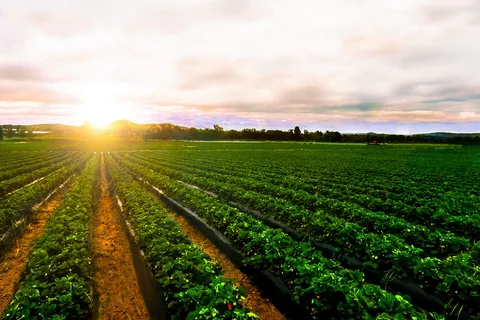Your cart is currently empty!

Why should preventive measures and biological control methods be preferred for protecting crops? Protecting crops is vital for ensuring food security and sustainable agriculture. While chemical pesticides have been the go-to solution for decades, they come with environmental, economic, and health-related drawbacks. Enter preventive measures and biological control methods—proactive and eco-friendly approaches gaining momentum in modern farming. But why should we prefer these methods? Let’s dive in.
Understanding Preventive Measures
What Are Preventive Measures?
Preventive measures are proactive steps taken to avoid pest infestations and crop diseases before they occur. Think of them as the crop protection version of “an apple a day keeps the doctor away.”
Examples of Preventive Measures
- Crop rotation to break pest life cycles.
- Using disease-resistant seed varieties.
- Maintaining proper soil health through organic fertilizers.
Biological Control Methods Explained
What is Biological Control?
Biological control uses living organisms—like beneficial insects, fungi, or bacteria—to combat pests. It’s nature’s way of balancing the scales.
Key Biological Control Methods
- Predatory Insects: Ladybugs devouring aphids.
- Parasitic Wasps: Targeting specific pests.
- Microbial Solutions: Using fungi to inhibit harmful pathogens.
Advantages of Preventive Measures
Cost-Effectiveness
Preventive measures reduce the need for expensive chemical interventions down the line. It’s like fixing a leaky faucet before it floods your home.
Environmental Sustainability
By avoiding harsh chemicals, these methods protect ecosystems and minimize pollution.
Boosting Crop Health
Healthy crops are less vulnerable to diseases, ensuring better yields and quality.

Benefits of Biological Control
Reduced Chemical Dependency
Biological control drastically cuts down on pesticide use, protecting both the environment and human health.
Targeted Solutions
Unlike broad-spectrum pesticides, biological controls only affect specific pests, leaving beneficial organisms unharmed.
Sustainable Outcomes
Once established, these methods provide long-term pest management.
The Environmental Impact
Chemical pesticides often harm non-target species and contaminate water bodies. Preventive and biological methods preserve biodiversity, ensuring bees, birds, and beneficial insects thrive alongside crops.
Economic Perspectives
Lower Long-Term Costs
Though initial investments in biological agents or preventive measures may seem high, the reduced need for repeated pesticide applications balances the scale.
Rising Demand for Organic Produce
Consumers are increasingly drawn to pesticide-free products, boosting profits for farmers who adopt these practices.
Health Benefits
Chemical residues in food can lead to health issues over time. By shifting to biological and preventive methods, farmers produce safer, healthier crops for consumers.
Real-World Examples
- Preventive Success: In India, integrated pest management (IPM) practices in cotton farming reduced pesticide use by 50%.
- Biological Triumph: In California, the release of parasitic wasps saved citrus crops from the ravages of the Asian citrus psyllid.
Challenges and Solutions
Challenges
- Lack of awareness among farmers.
- Initial costs for biological agents.
Solutions
- Government subsidies.
- Farmer training programs.
Preventive Measures vs. Reactive Methods
Prevention keeps problems at bay, while reactive methods only patch up issues temporarily. Isn’t it better to lock the door before pests enter your home?
Role of Farmers in Adoption
Farmers are the backbone of this shift. With proper education and tools, they can adopt these sustainable practices effectively.
Government and Policy Support
Governments play a pivotal role in encouraging sustainable practices by offering financial incentives and setting strict regulations on pesticide use.
Future of Sustainable Agriculture
The future looks bright with innovations like AI-driven pest monitoring and advancements in biological control. Combining technology with tradition ensures crops are protected sustainably.
Conclusion of why should preventive measures and biological control methods be preferred for protecting crops
Preventive measures and biological control methods are not just alternatives; they’re necessities for a sustainable agricultural future. They offer environmental, economic, and health benefits that far outweigh the convenience of chemical pesticides. Let’s embrace these methods for the well-being of our crops, planet, and future generations.
FAQs
1. How effective are biological control methods?
When implemented correctly, biological control methods can achieve long-term pest management and reduce dependency on chemicals.
2. What are common preventive measures for crops?
Crop rotation, disease-resistant seeds, and soil health management are widely practiced preventive strategies.
3. Can biological control replace chemical pesticides completely?
While it may not replace them entirely in all cases, biological control significantly reduces their usage and impact.
4. How can farmers transition to these methods?
Farmers can start small, integrate methods gradually, and seek guidance from agricultural experts or training programs.
5. What role does biodiversity play in biological control?
Biodiversity supports natural pest control by encouraging a healthy balance of predators and prey in the ecosystem.
Also read : Why Should You Give More Space to Bicyclists, Pedestrians, and Motorcyclists in Bad Weather?







Leave a Reply